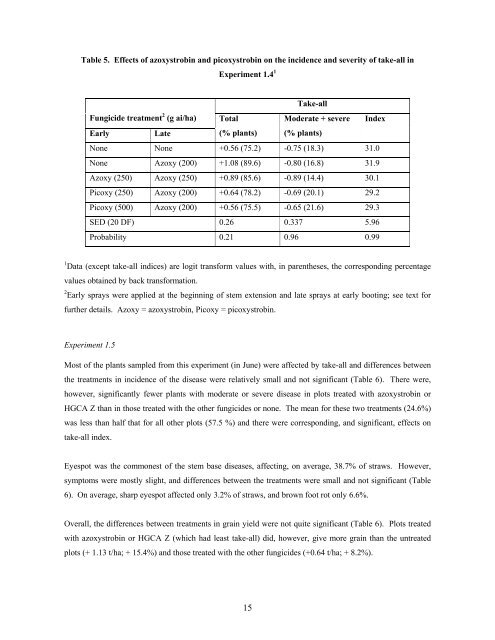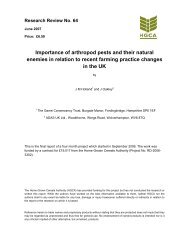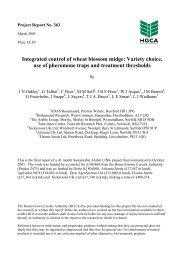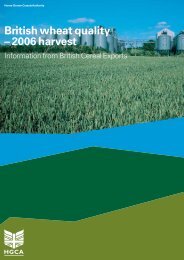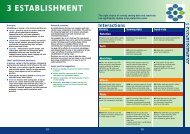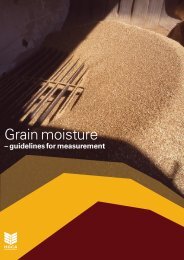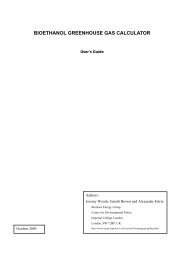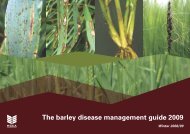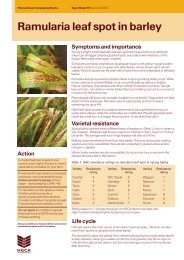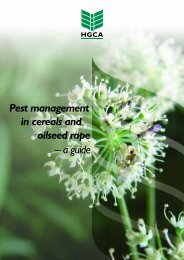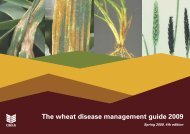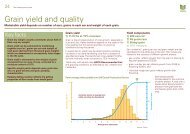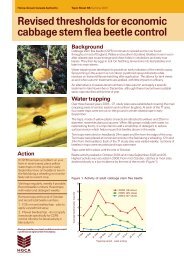PROJECT REPORT No. 285 EFFECTS OF ... - HGCA
PROJECT REPORT No. 285 EFFECTS OF ... - HGCA
PROJECT REPORT No. 285 EFFECTS OF ... - HGCA
- No tags were found...
You also want an ePaper? Increase the reach of your titles
YUMPU automatically turns print PDFs into web optimized ePapers that Google loves.
Table 5. Effects of azoxystrobin and picoxystrobin on the incidence and severity of take-all inExperiment 1.4 1Take-allFungicide treatment 2 (g ai/ha) TotalModerate + severe IndexEarlyLate(% plants) (% plants)<strong>No</strong>ne <strong>No</strong>ne +0.56 (75.2) -0.75 (18.3) 31.0<strong>No</strong>ne Azoxy (200) +1.08 (89.6) -0.80 (16.8) 31.9Azoxy (250) Azoxy (250) +0.89 (85.6) -0.89 (14.4) 30.1Picoxy (250) Azoxy (200) +0.64 (78.2) -0.69 (20.1) 29.2Picoxy (500) Azoxy (200) +0.56 (75.5) -0.65 (21.6) 29.3SED (20 DF) 0.26 0.337 5.96Probability 0.21 0.96 0.991 Data (except take-all indices) are logit transform values with, in parentheses, the corresponding percentagevalues obtained by back transformation.2 Early sprays were applied at the beginning of stem extension and late sprays at early booting; see text forfurther details. Azoxy = azoxystrobin, Picoxy = picoxystrobin.Experiment 1.5Most of the plants sampled from this experiment (in June) were affected by take-all and differences betweenthe treatments in incidence of the disease were relatively small and not significant (Table 6). There were,however, significantly fewer plants with moderate or severe disease in plots treated with azoxystrobin or<strong>HGCA</strong> Z than in those treated with the other fungicides or none. The mean for these two treatments (24.6%)was less than half that for all other plots (57.5 %) and there were corresponding, and significant, effects ontake-all index.Eyespot was the commonest of the stem base diseases, affecting, on average, 38.7% of straws. However,symptoms were mostly slight, and differences between the treatments were small and not significant (Table6). On average, sharp eyespot affected only 3.2% of straws, and brown foot rot only 6.6%.Overall, the differences between treatments in grain yield were not quite significant (Table 6). Plots treatedwith azoxystrobin or <strong>HGCA</strong> Z (which had least take-all) did, however, give more grain than the untreatedplots (+ 1.13 t/ha; + 15.4%) and those treated with the other fungicides (+0.64 t/ha; + 8.2%).15


